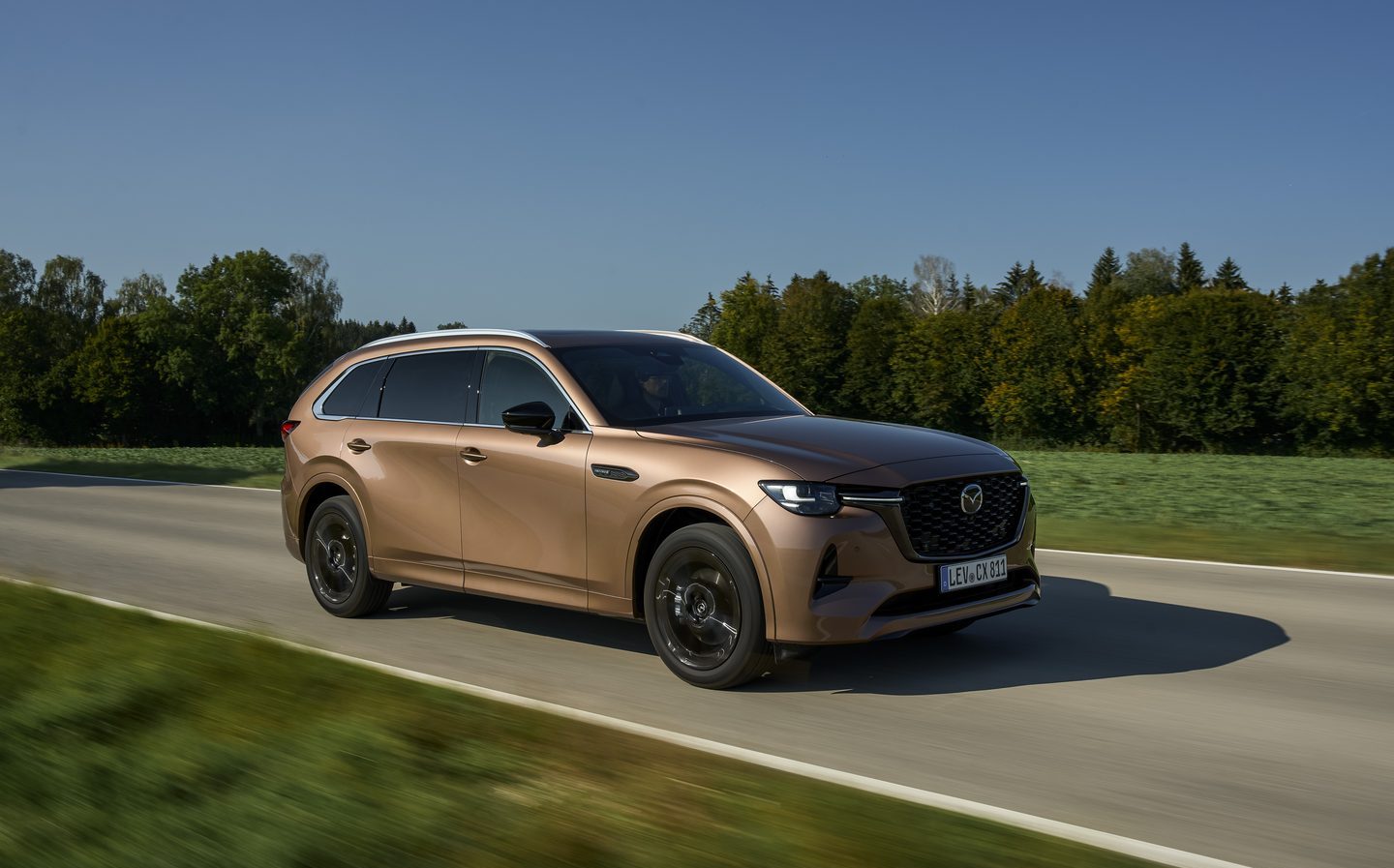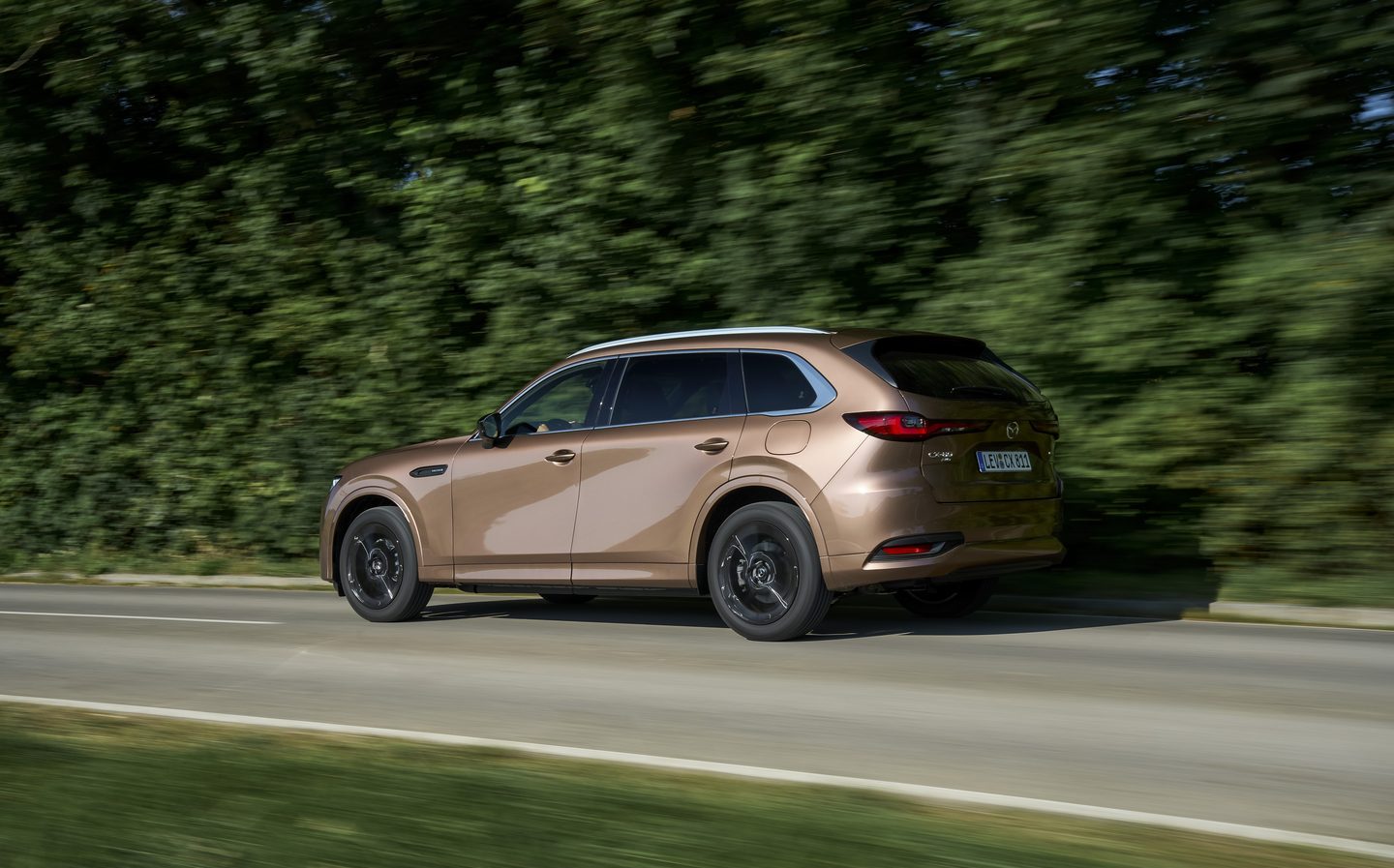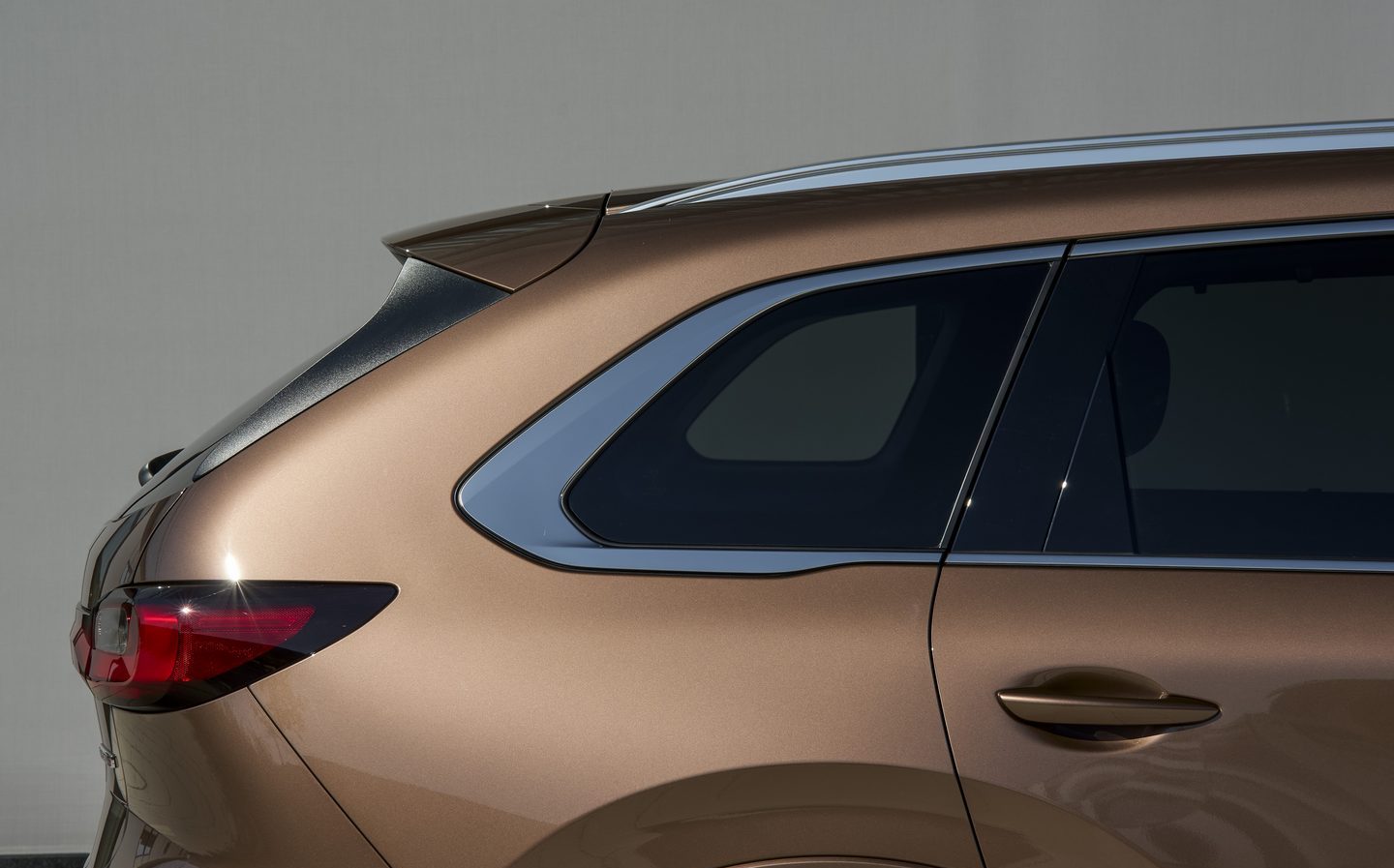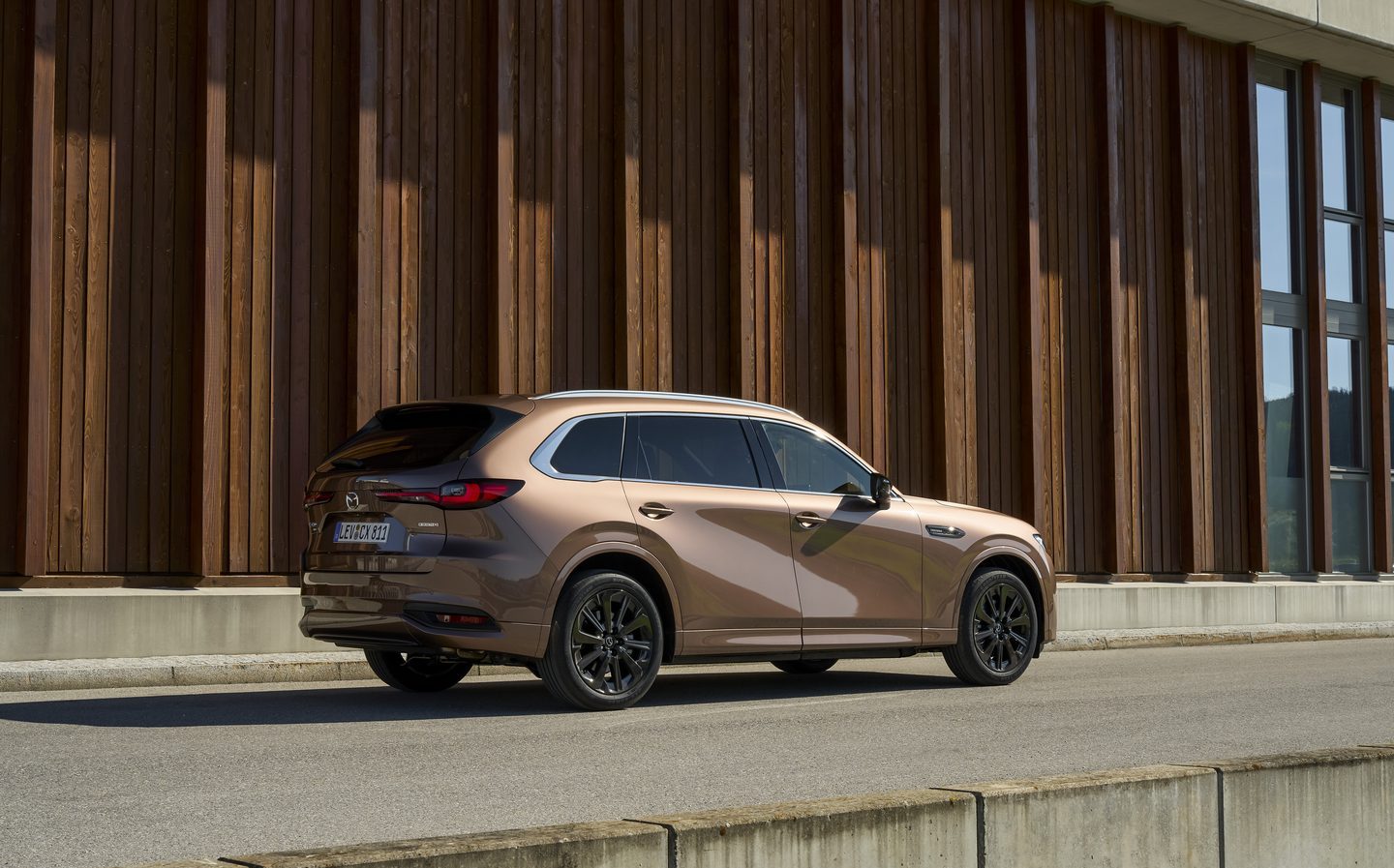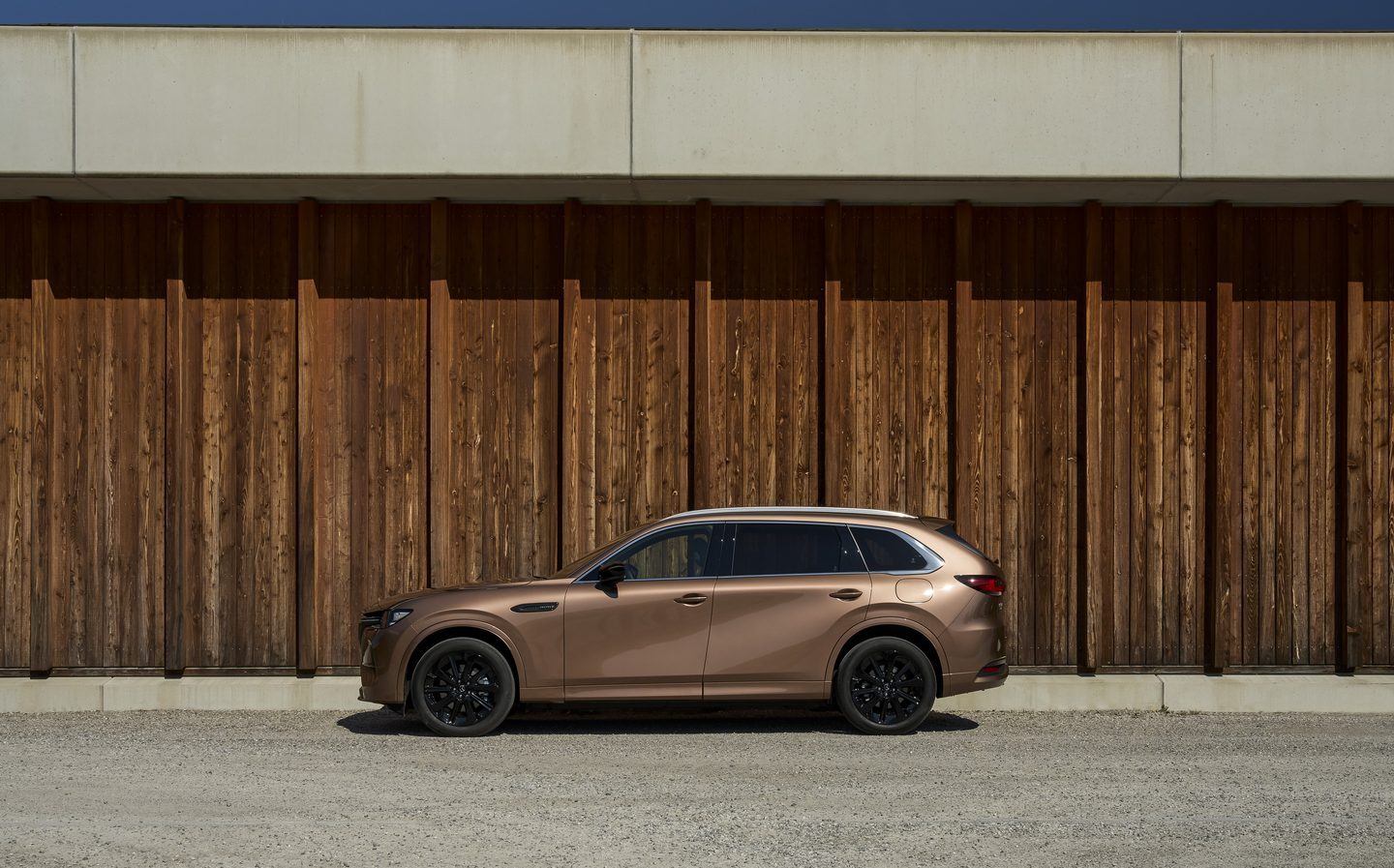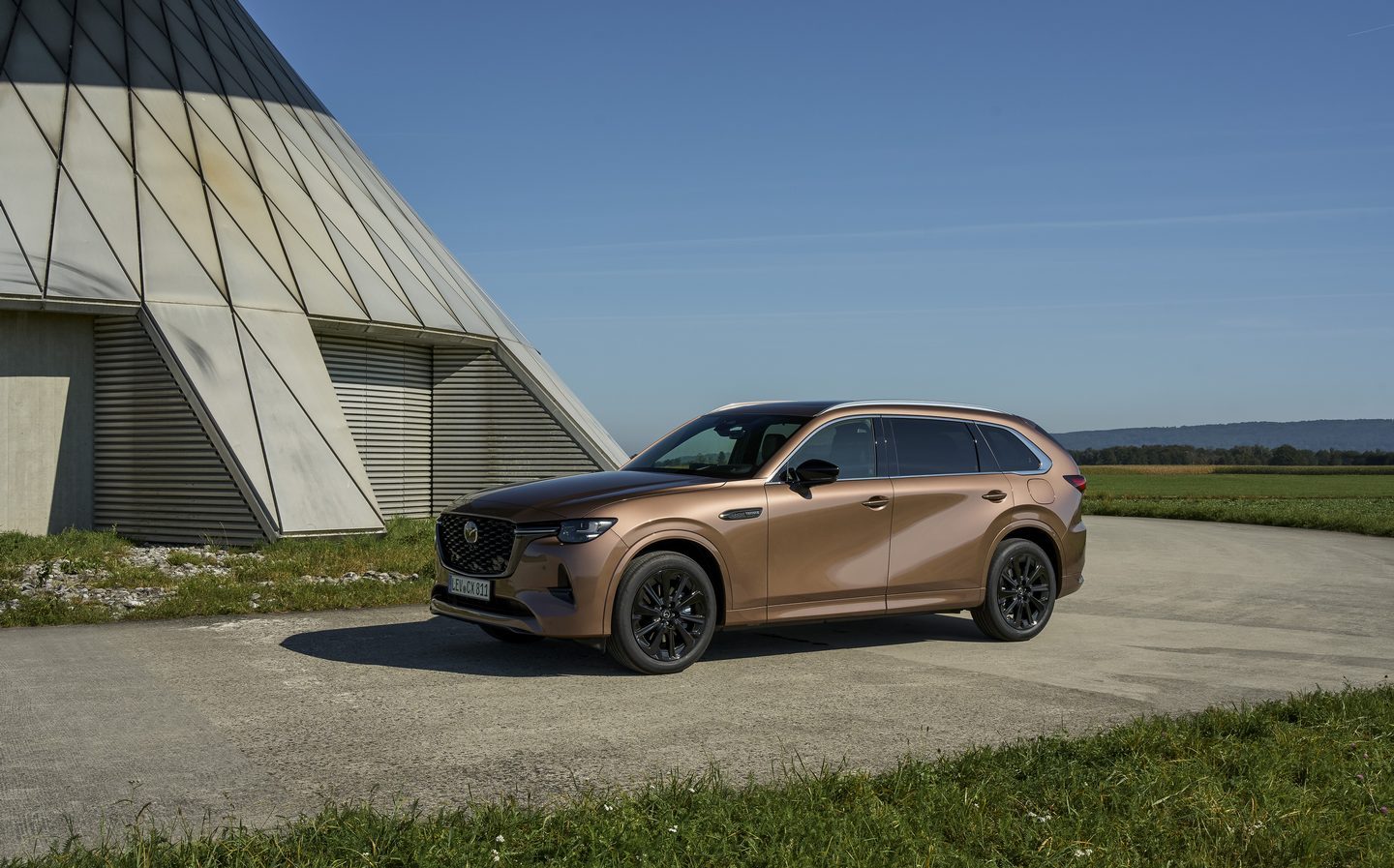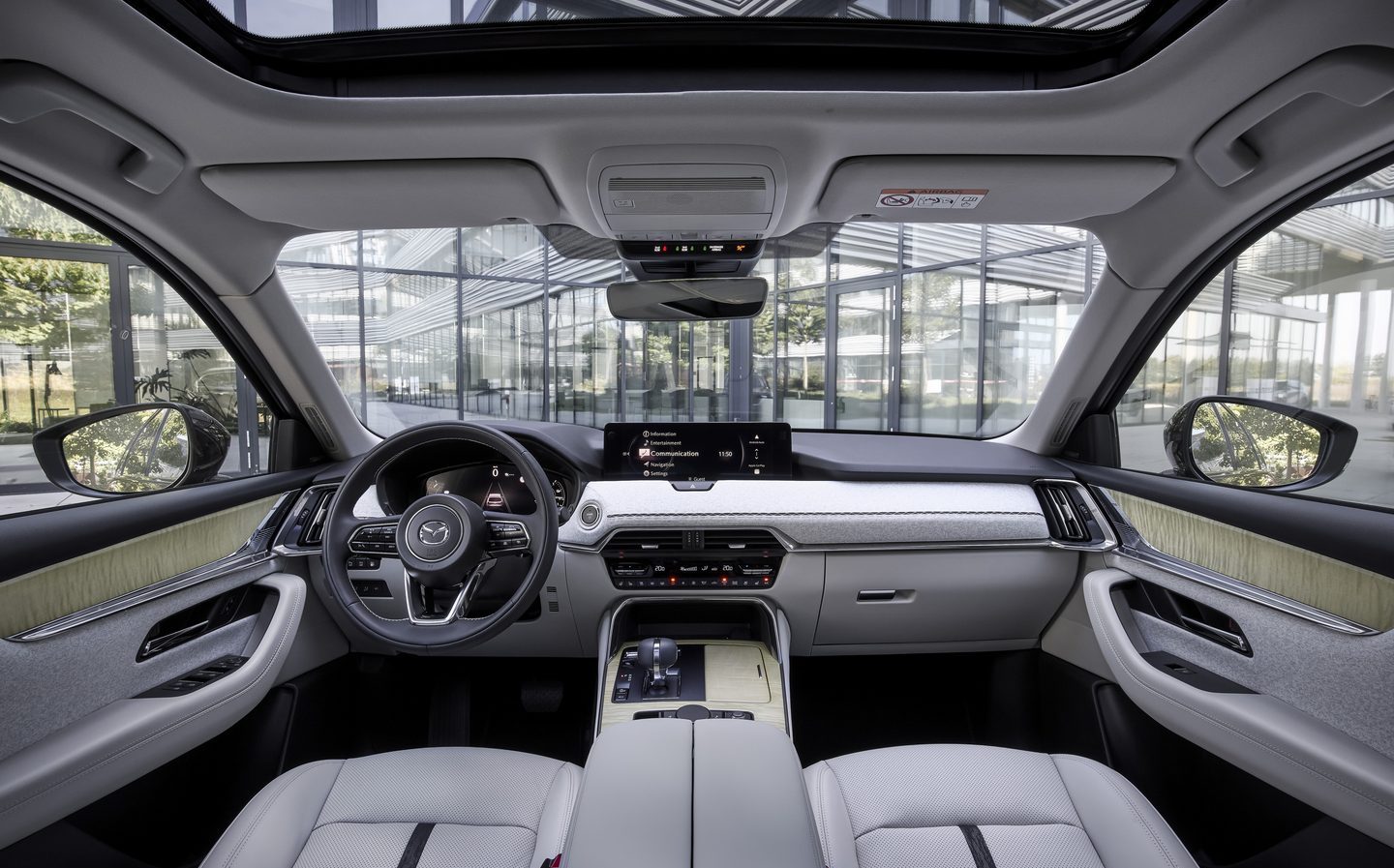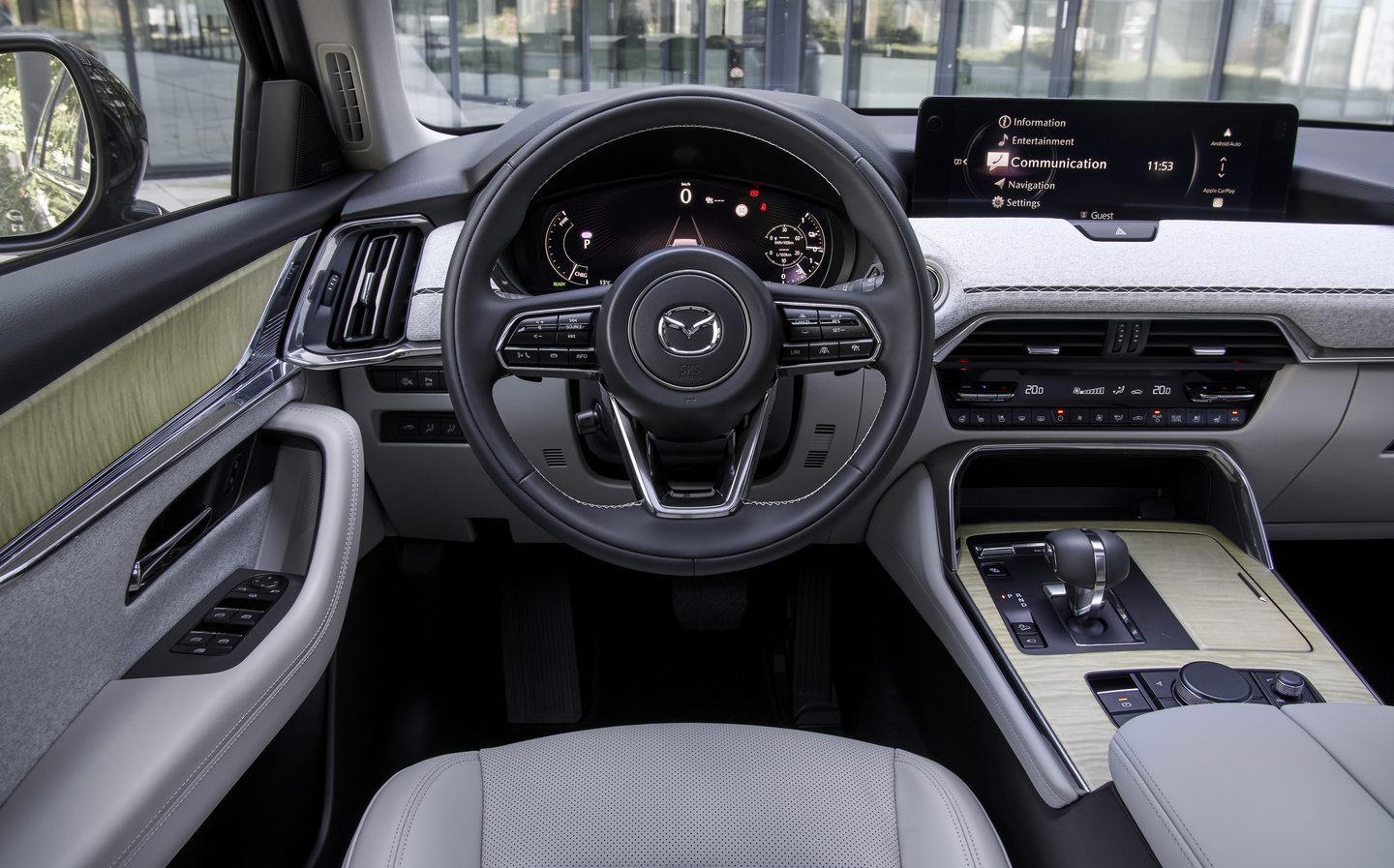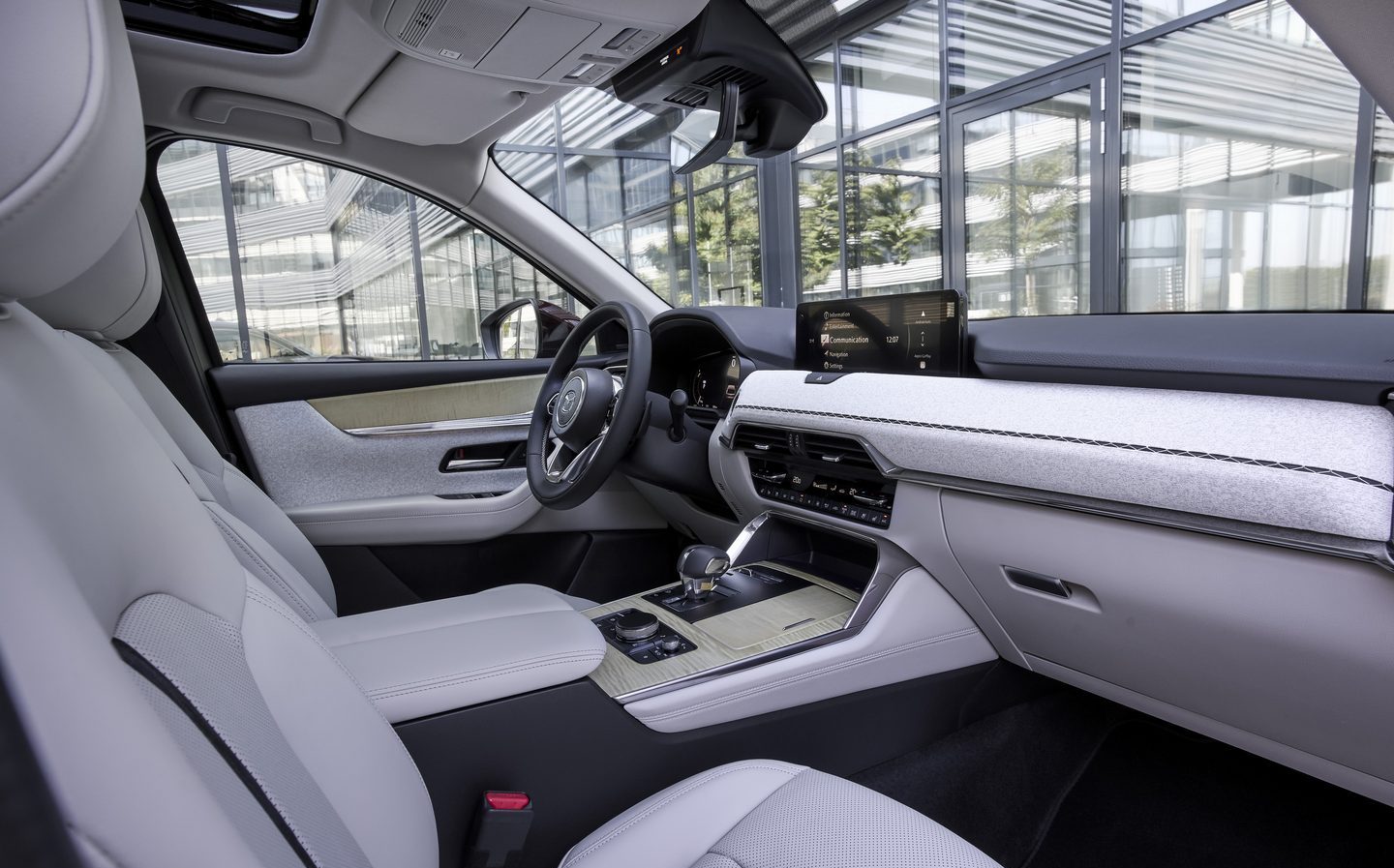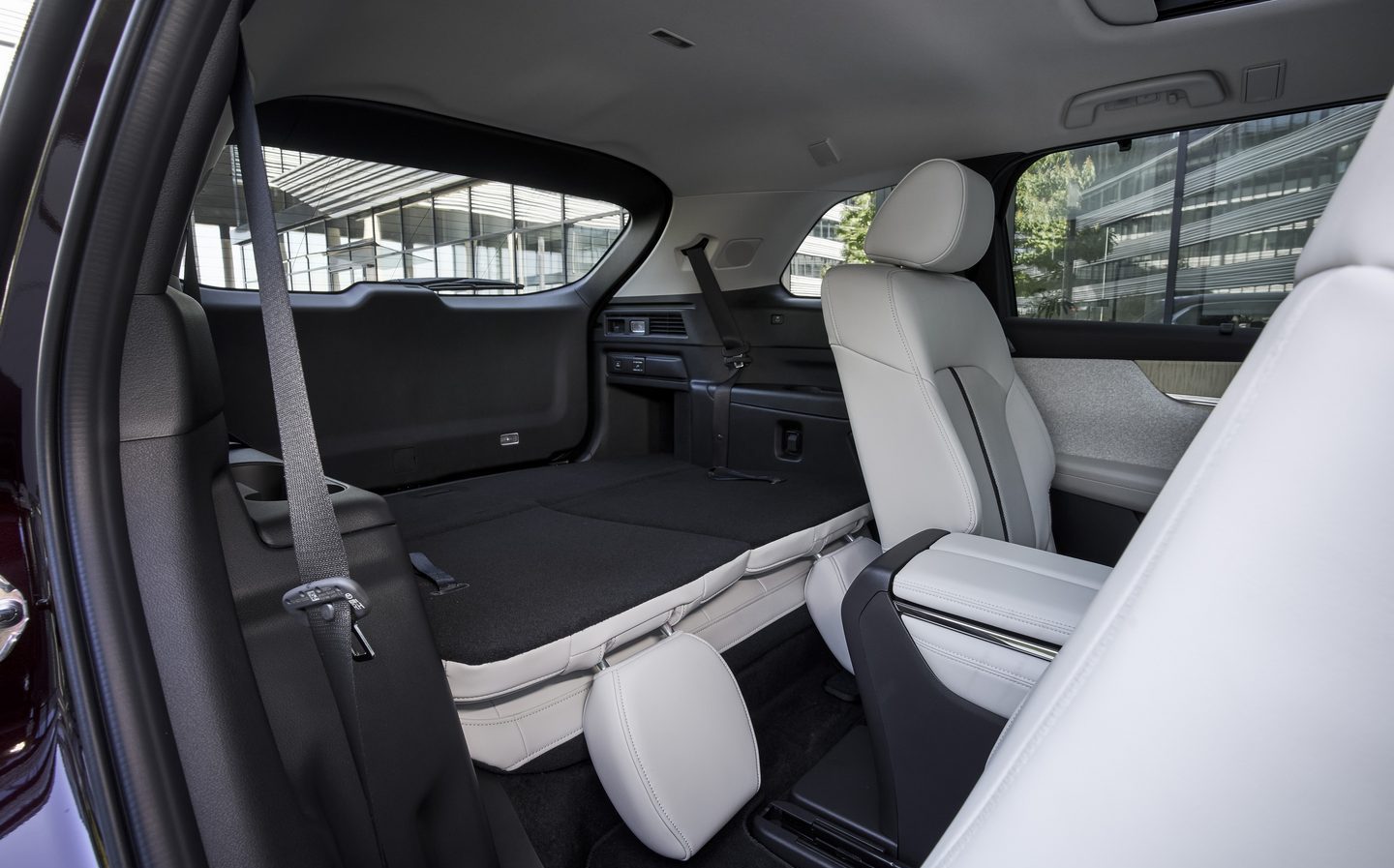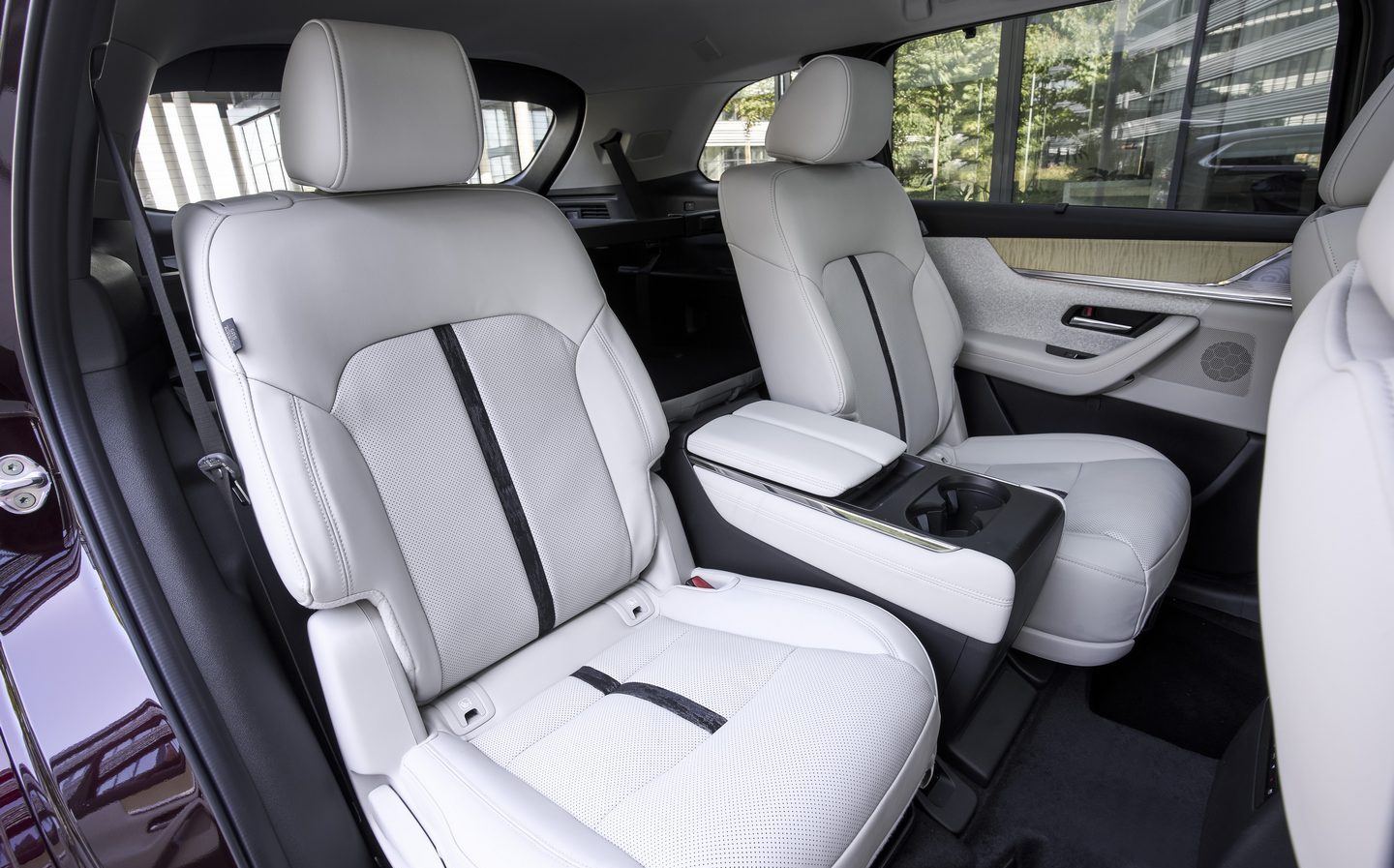Mazda CX-80 2024 review: A seven-seat SUV that matches the Germans for quality ... mostly
Japanese hospitality for a bigger crowd
I’m not quite sure that what the world truly needs right now is another big SUV. It’s not as if Mazda is deficient on the chunky 4×4 side of things. The Japanese car maker — which still manages to be an independent marque, even if it does have a tech-sharing agreement with Toyota — already has the CX-5 and CX-60 models in its line-up. Neither is what you might call small.
However, neither seats more than five people and so Mazda figured it needs a car that can cope with extended families. To do so, it took the CX-60 — again, not a small car to begin with — and added 250mm to its overall length, stretching it to just shy of the five metre mark. All of that extra length has gone between the wheels, making for a 3.1-metre wheelbase (the distance between the front and rear wheels), giving the CX-80 considerably more interior space than the CX-60 and allowing for a thrid row of seats.
This means the CX-80 can be a seven-seater… but actually you can have it with six seats, if preferred, as both the Homura Plus and Takumi Plus trim levels come with a plair of plush “captain’s chairs” in the middle row instead of a three-seat bench.
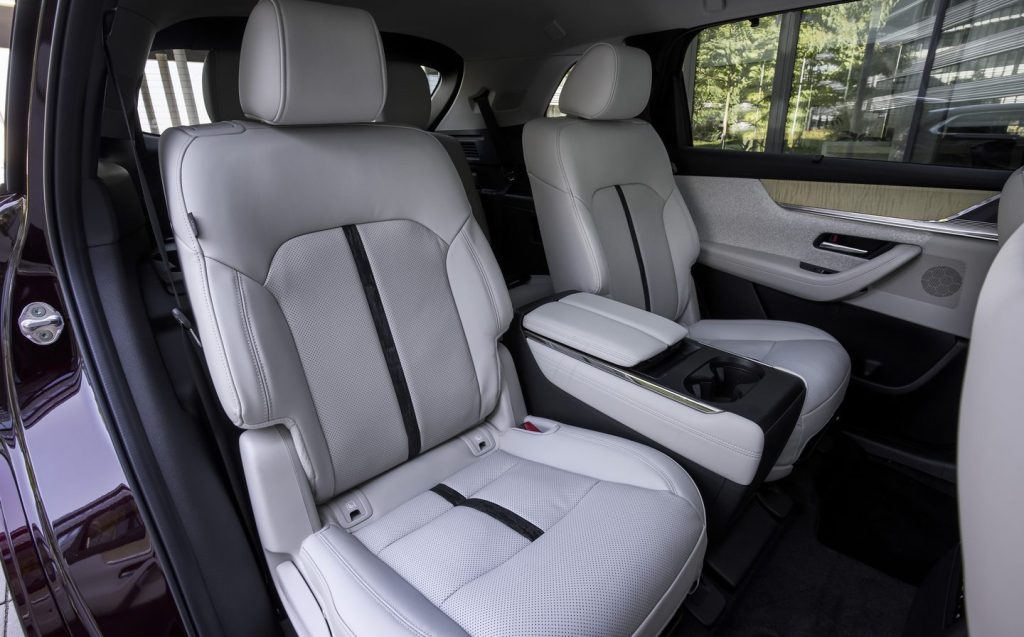
The Homura Plus leaves a gap between those two chairs, which makes it much easier to access the folding seats in the third row, while the Takumi Plus model gets a console between the seats, with storage and cup holders, so as to create more of a Club World ambience.
From the outside, at the front, you can’t really tell the CX-80 apart from the CX-60. Both have the same massive grille with small, slightly piggy-looking, headlights on either side. It’s not what you’d call handsome, especially compared to Mazda’s work on its lower-slung 3 hatchback and CX-30 crossover, but it’s not quite Big-BMW-Ugly either.
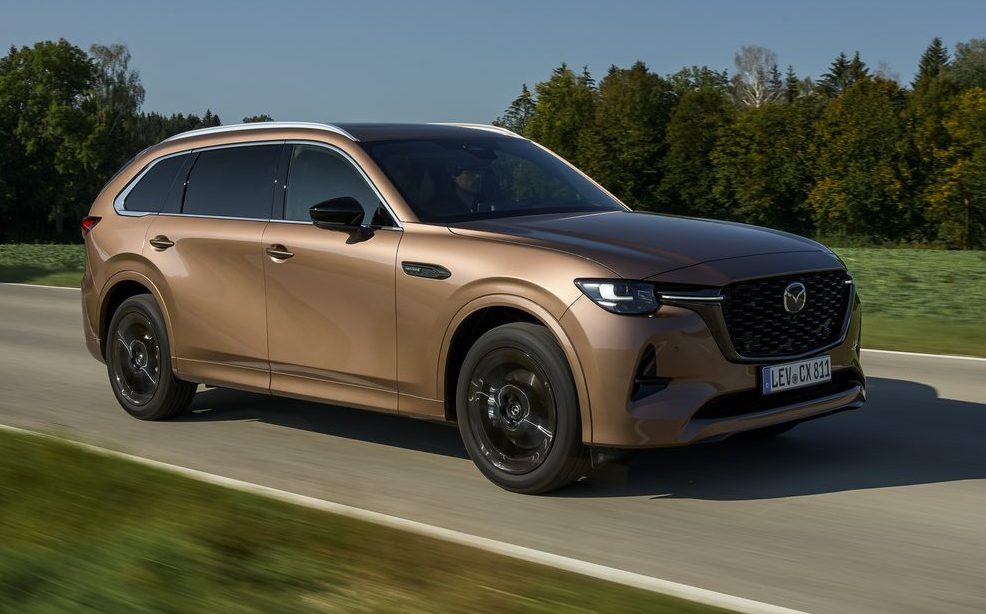
With the arrival of the CX-80, Mazda has expanded its paint palette to include a metallic gold-brown, called “Melting Copper” which is quite nice, and a refreshing change from the usual endless greys and silvers.
Look down the side of the CX-80 and you’ll quickly spot its extra bulk compared to the CX-60. It’s 24mm taller than the CX-60, too, to the benefit of rear-seat headroom, but the extra size has been reasonably well crafted-in, and while it’s certainly bulky, the CX-80 manages to avoid looking too slab-sided or monolithic. Handsome 20in alloy wheels, finished in a matte grey, also help.
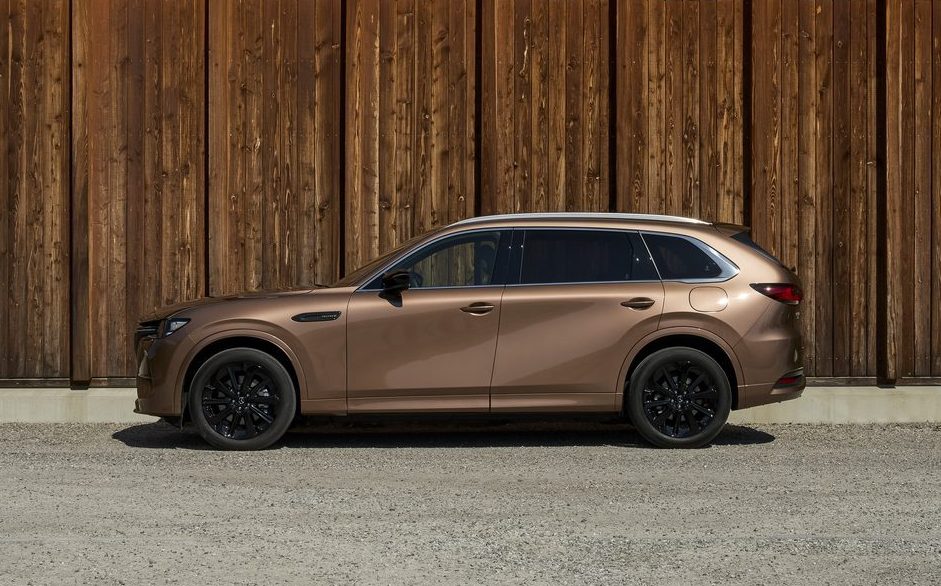
Inside, the front section of the cabin is identical to that of the CX-60, which is both good and bad.
It’s good because Mazda has a talent for well-laid-out interiors which are simple to use, and the CX-80 benefits from that. The main instruments are on a digital screen behind the wheel, and while they’re not very customisable, they are at least simple and easy to read, which is not something you can say for all of the CX-80’s competitors.
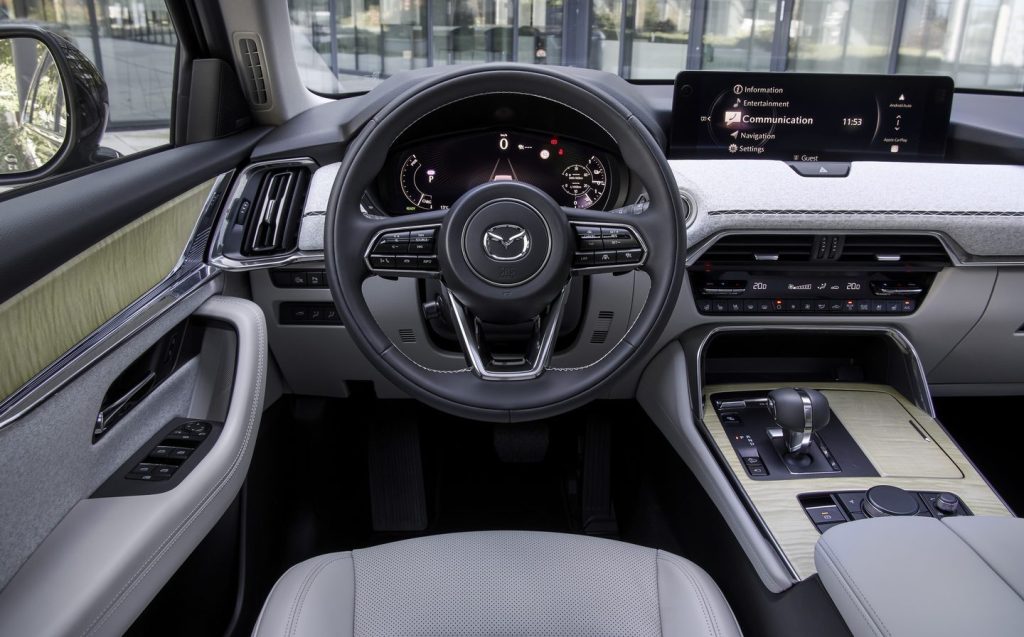
The big screen in the centre of the dash is not a touchscreen, though, which means you still have to use the little click-wheel down on the centre console. This might seem a bit old-school but it works better when you’re on the move as you spend much less time staring at the screen working out which bit to stab at.
The screen’s menus are helped in their simplicity by the fact that Mazda has kept physical buttons and switches to control the air conditioning, and to that we can only say bravo — if only all other car makers would follow that lead.
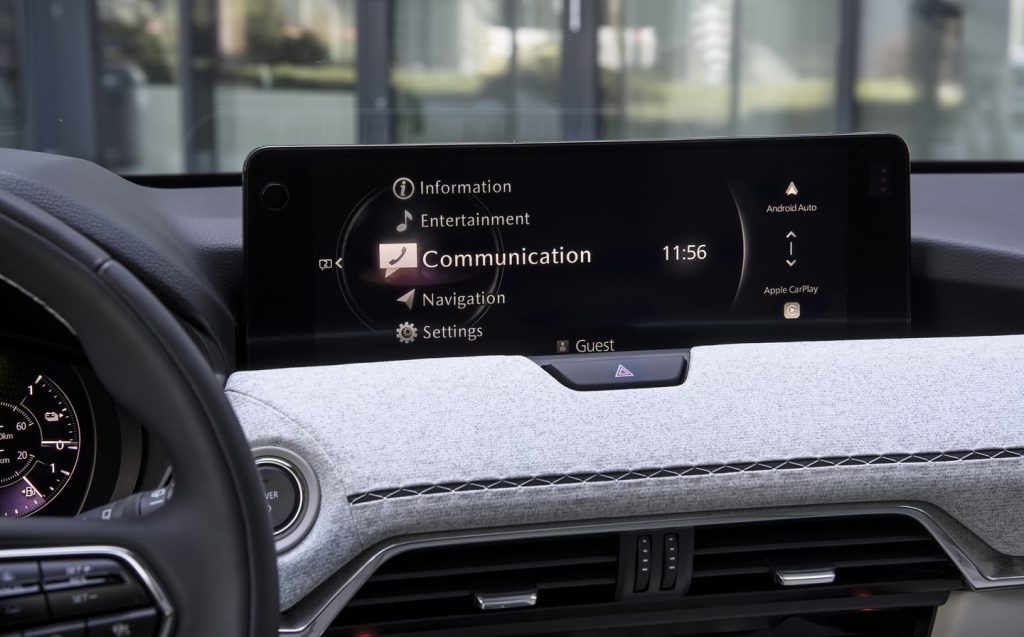
The front seats have generous adjustability and are very comfortable, and you can ask the CX-80 to automatically set the seat and the electrically adjustable steering wheel for your height. The car can then remember that setting, and using the driver drowsiness camera to scan your face, return the seat to your preferred position when you get in.
Mazda says that the face recognition system only stores its data within the car, and it’s never transmitted over the internet.

What’s bad? Well, for a big car, there’s not a lot of practical storage in the cabin. You get a slim wireless phone charging pad, two cup holders, a shallow storage area under the split central armrest and some fairly small door pockets. Others — notably the Skoda Kodiaq — offer far more in the way of places to stash your phone, purse, keys and drinks.
There’s also a specification tripwire. Go for the top Takumi-spec models, and the cabin gets a somewhat distressing combo of very pale wood trim with huge chunky chrome edging, and pale leather and cloth trim for the seats and dashboard. It’s rather garish and, to my eyes, all a bit much.
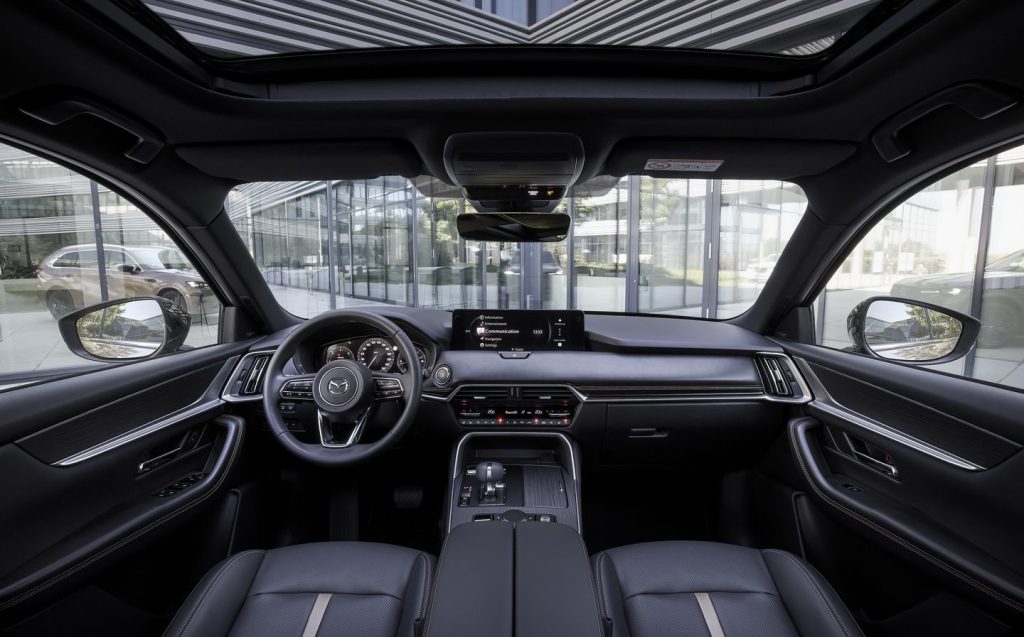
You’re better off to go for the darker Homura specification, which comes with black leather, contrast-stitched with brown thread, dark wood, and the too-shiny chrome replaced by satin gunmetal sections, which are brushed rather than polished. It’s a much classier looking cabin setup.
In the middle row, if you’ve specified the CX-80 with the captain’s chairs, there’s plenty of space and comfort for two. That’s a big improvement on the CX-60, which can be surprisingly tight for rear space depending on how tall the front seat occupants are.
The middle row seats in the CX-80 can slide back and forth by 120mm, and they can recline at up to 33 degrees, too, so anyone seated back there can get very comfy indeed.
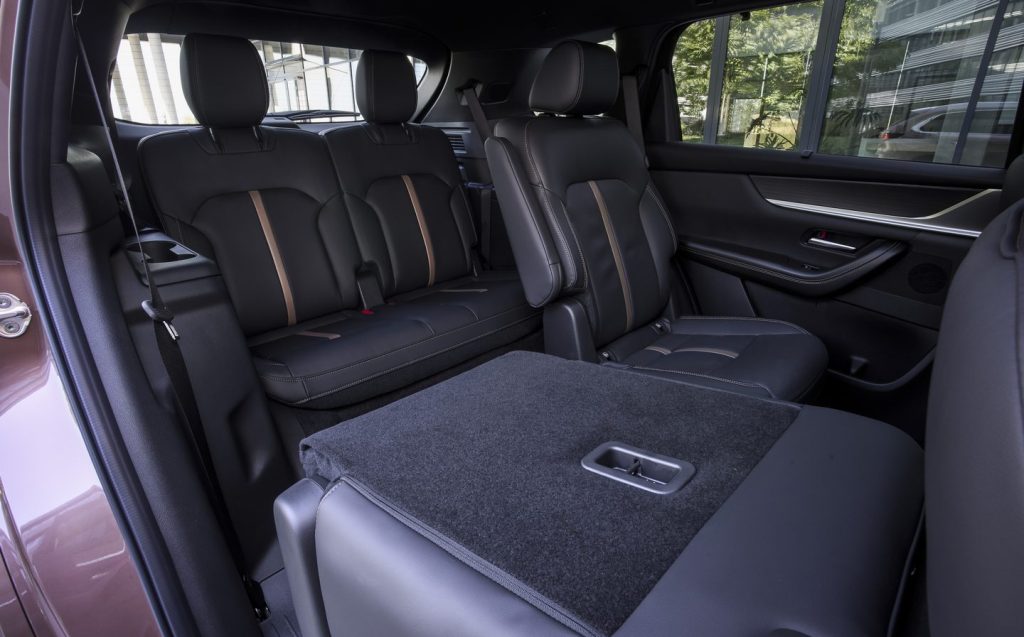
The huge rear doors make getting in and out easy, while the huge windows in those doors give you a great view out, which can be occluded by standard-fit rear window blinds if it all gets a bit too much.
However, as with so many big seven-seat (OK, six-seat in this case) SUVs, passengers will have to compromise if there’s a full complement of bodies on board.
The third-row pews are designed for people of up to about 5ft 8in, and they come with the same lovely leather upholstery as the rest of the cabin. They’re nice seats but unless those in the middle row are prepared to shuffle forward a bit — a good bit — then legroom and space for feet are both tight.
As with most multi-seat SUVs, these folding seats are more suited to children than to adults, and even taller kids might start complaining.
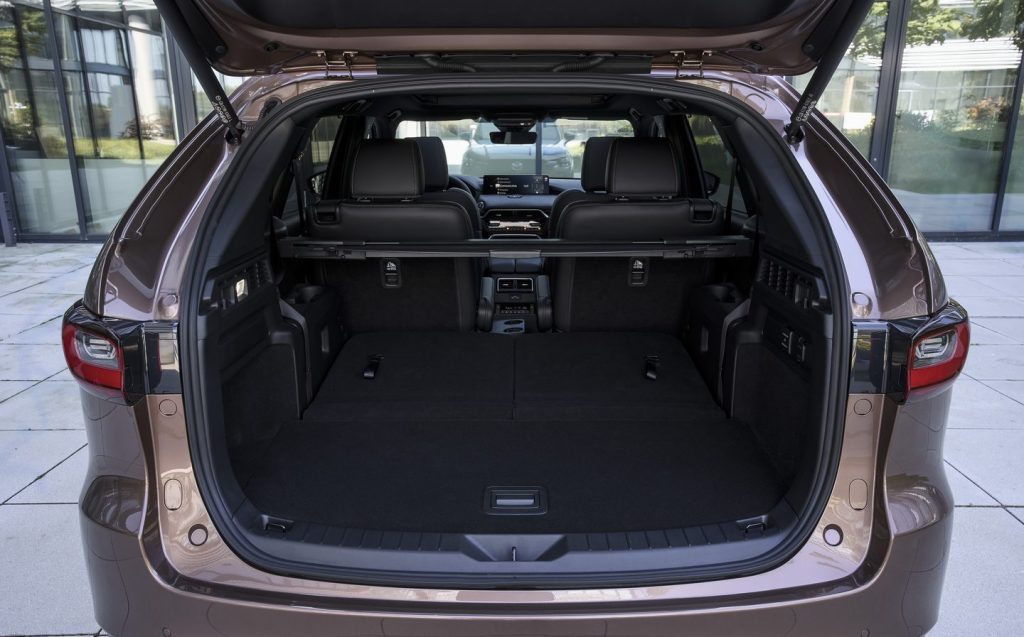
When the third row is folded away, the CX-80 has a 687-litre boot, which is more than decent, albeit still less than that offered by the likes of the Skoda Kodiaq and the Peugeot 5008. At least the Mazda is able to offer plug-in hybrid power with full seating for six or seven, though — the Skoda can’t manage that and neither can bigger, fancier alternatives such as the Audi Q7.
Mazda can do this because the CX-80 is based on the company’s own large car underpinnings, which allows it to offer petrol, diesel, hybrid, or pure-electric power. Mazda has been notably reluctant to shift to fully electric models — so far, the company only sells the short-ranged MX-30 electric car, and that sells in tiny amounts. But while such EVs are now being promised (on an all-new electric car platform) by 2026, Mazda’s decision to be electric-shy may actually be reaping benefits; the company expects to have expanded its European sales by two per cent come the end of its financial year next March, at a time when many rival brands are seeing sales contract.
You can drive the CX-80 on electric-only power, just not for very long. Fully charge the 17.8kWh battery of the CX-80 plug-in hybrid model and Mazda says that it will go for some 37 miles before the charge runs out. Actually, 30 miles is a more realistic figure unless you’re only duffing around town at low speeds.
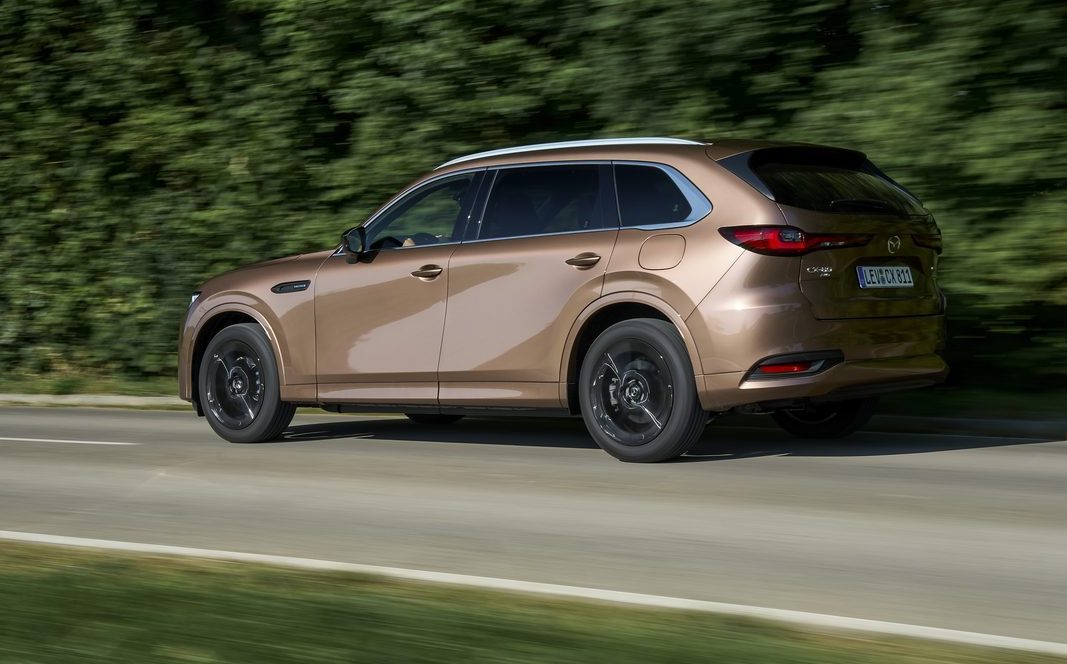
But the CX-80 PHEV proved decently economical in longer-range driving. As long as you’re prepared to charge up the battery regularly, you ought to be able to squeeze out some very good fuel economy. On one long run, which involved a good stretch at high speeds on a German Autobahn, we recorded 50mpg on average, having started with a fully charged battery.
That’s decent, but it’s worth remembering that long motorway runs starting with a flat battery will likely return more like 30-35mpg. Still, with a 35g/km CO2 figure, the PHEV CX-80 will be the choice for company car buyers.
What about keen drivers, though? There is a modicum of driver entertainment to be had in the big Mazda. The standard-fit four-wheel-drive system is rear-biased, so for such a big car, it feels relatively adjustable in flowing corners, helped by a system that squeezes the inside rear brake to help shift the CX-80’s bulk in towards the apex.
The steering is well-weighted, though slightly heavier than one might expect, and encourages a bit of enthusiastic driving. Of course, the CX-80’s weight and size play against it, ultimately, but it’s more fun to drive than either the Skoda or Peugeot mentioned above, and not far off the precise feeling of the Audi Q7.
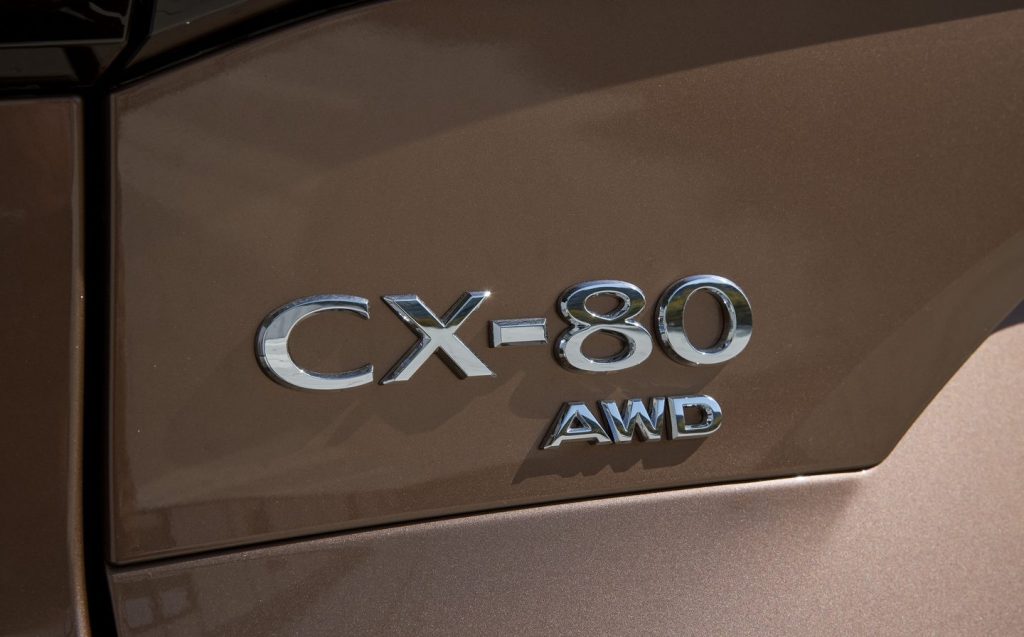
The CX-80 also does a good job of blending the change between regenerative braking (to top up the hybrid’s battery) and friction braking and so the brake pedal feel is natural and strong, which is not always the case with plug-in hybrids.
The downside is the ride quality. Mazda says that its engineers have recalibrated the rear suspension’s dampers and springs, as well as chucking out the rear anti-roll bar altogether in an effort to provide the CX-80 with a soothing, cosseting ride, but unfortunately — like the CX-60 — it has a habit of clattering noisily into bumps in a very uncouth manner. If the road surface is smooth, then the CX-80 feels smooth, but lumpier tarmac causes issues.
Having to cope with 2.2-tonnes of bulk is doubtless in part to blame, though that’s a mass figure that seems unremarkable in an age of hefty electric cars. Another surprise is the amount of tyre roar if you venture onto a concrete motorway section.
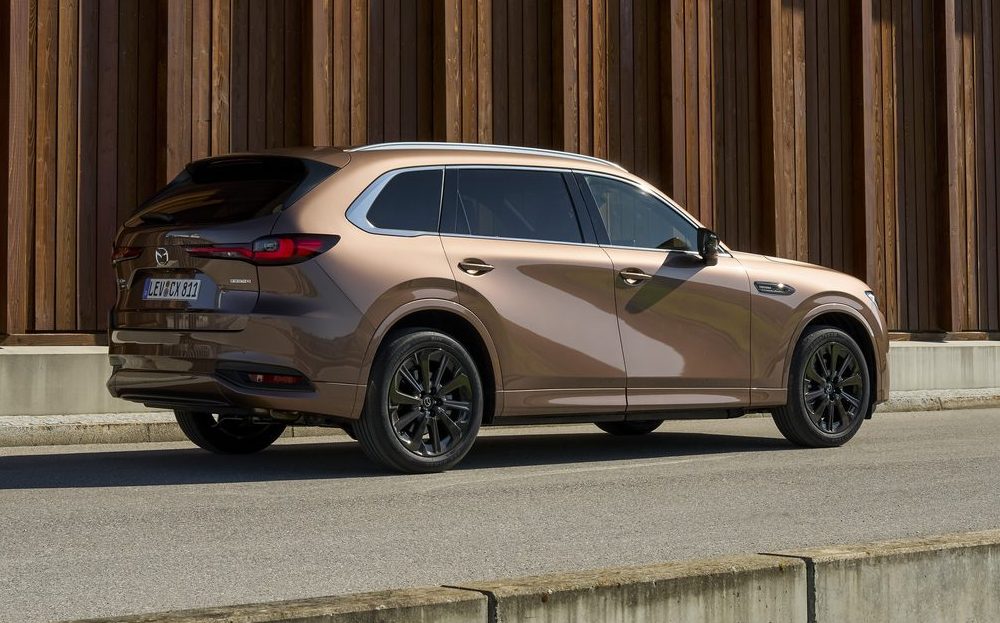
Speaking of motorways, if long stretches in the inside lane are your thing, you might be well advised to shun the plug-in hybrid CX-80 and go for the 3.3-litre straight-six diesel instead. Okay, a big six-cylinder diesel, with only the fig leaf of mild-hybrid assistance, might not be reading the room very well in this day and age. The thing is, this is an utter belter of an engine — creamy smooth and with lots of torque (twisting force) — and it’s amazingly economical for a big engine in a big car, easily capable of better than 50mpg on long runs. It’s certainly worth considering.
As is the CX-80 as a whole. It’s not an especially cheap car — Mazda is tilting, only semi-successfully, at the German premium brands with this and the CX-60 — but it is a curiously likeable one. Ride quality apart, it’s a more engaging thing to drive than most of its mainstream rivals, and as long as you avoid certain colour choices, the cabin is a match for the Germans in quality and comfort terms.
Related articles
- If you found this review of the Mazda CX-80 interesting, you might want to read about the fully electric Skoda Enyaq iV vRS
- Here are the top 10 longest-range electric cars
- Read our review of the diesel-engined Mazda CX-60
Latest articles
- Lewis Hamilton wants to design a modern day Ferrari F40 with manual gearbox
- Dacia Bigster 2025 review: The ‘anti-premium’ family SUV that punches above its weight
- Your car’s worn tyres could be being burnt illegally in India, investigation reveals
- Open-top 214mph Aston Martin Vanquish Volante is world’s fastest blow-dry
- F1 2025 calendar and race reports: The new Formula One season as it happens
- Alfa Romeo Junior Ibrida 2025 review: Hybrid power adds an extra string to crossover’s bow
- Top 10 longest-range electric cars: all with over 400 miles per charge (officially)
- Renault 5 Turbo 3E ‘mini supercar’ confirmed with rear in-wheel motors producing 533bhp … and insane levels of torque
- British firm Longbow reveals ‘featherweight’ electric sports cars with 275-mile range


